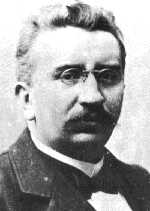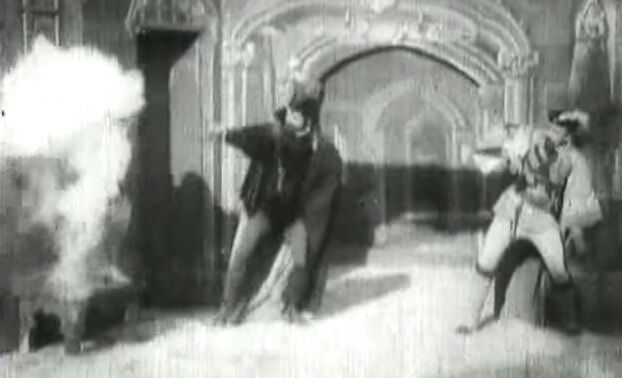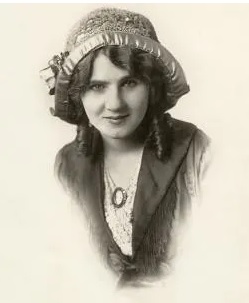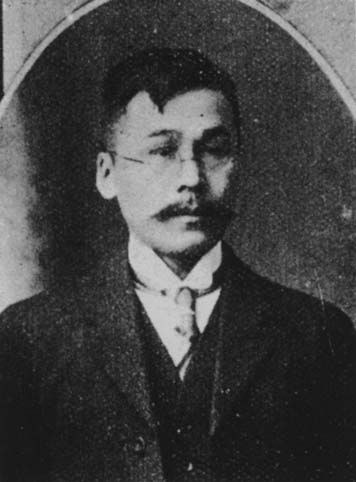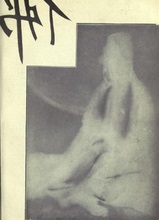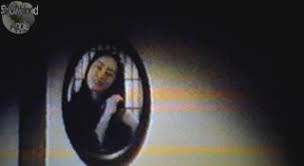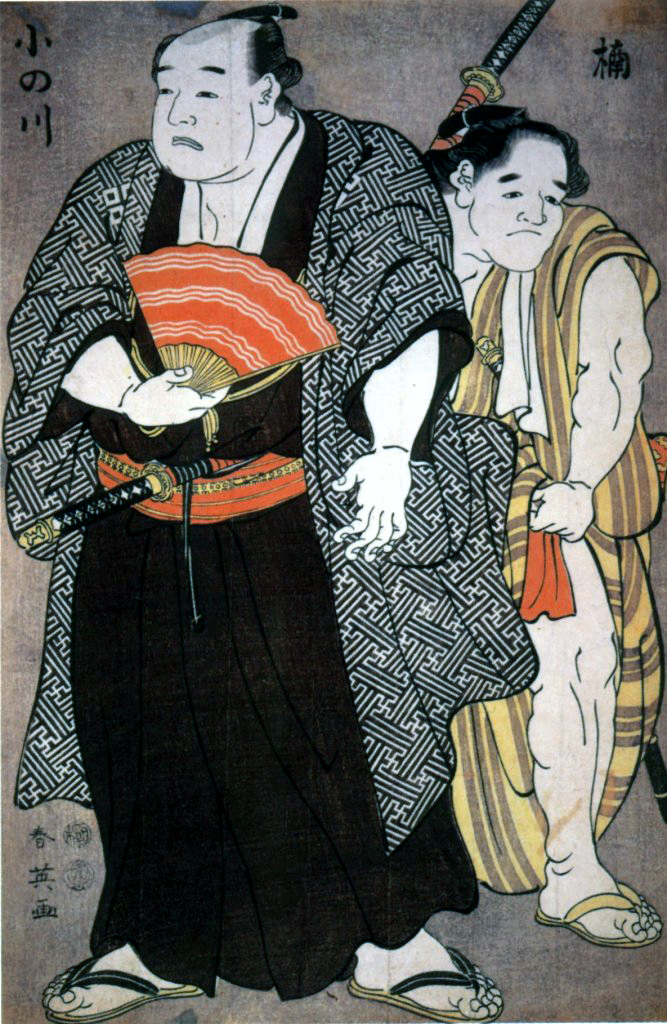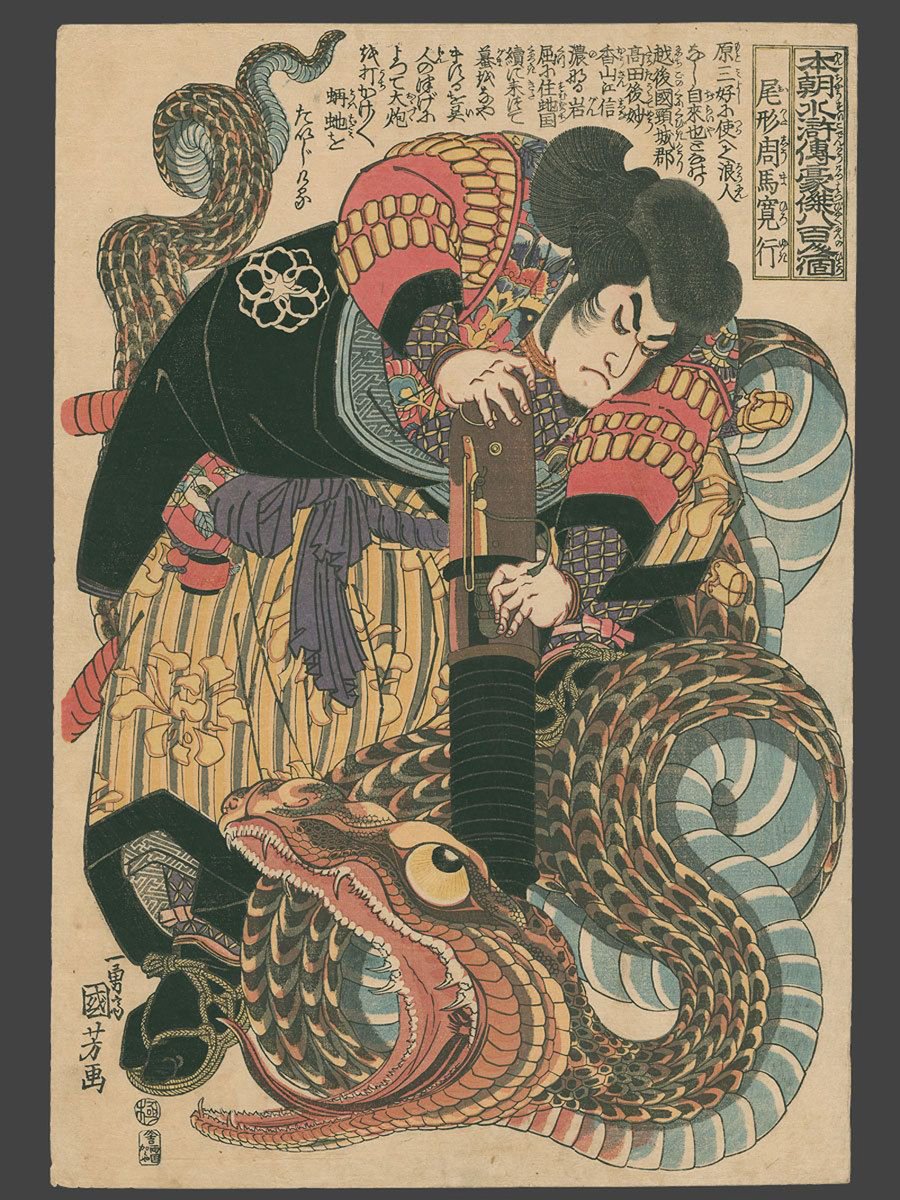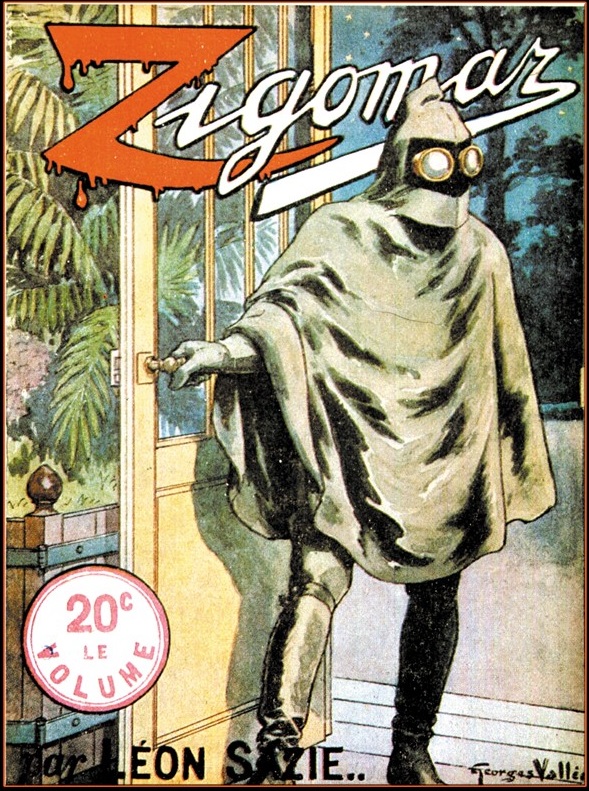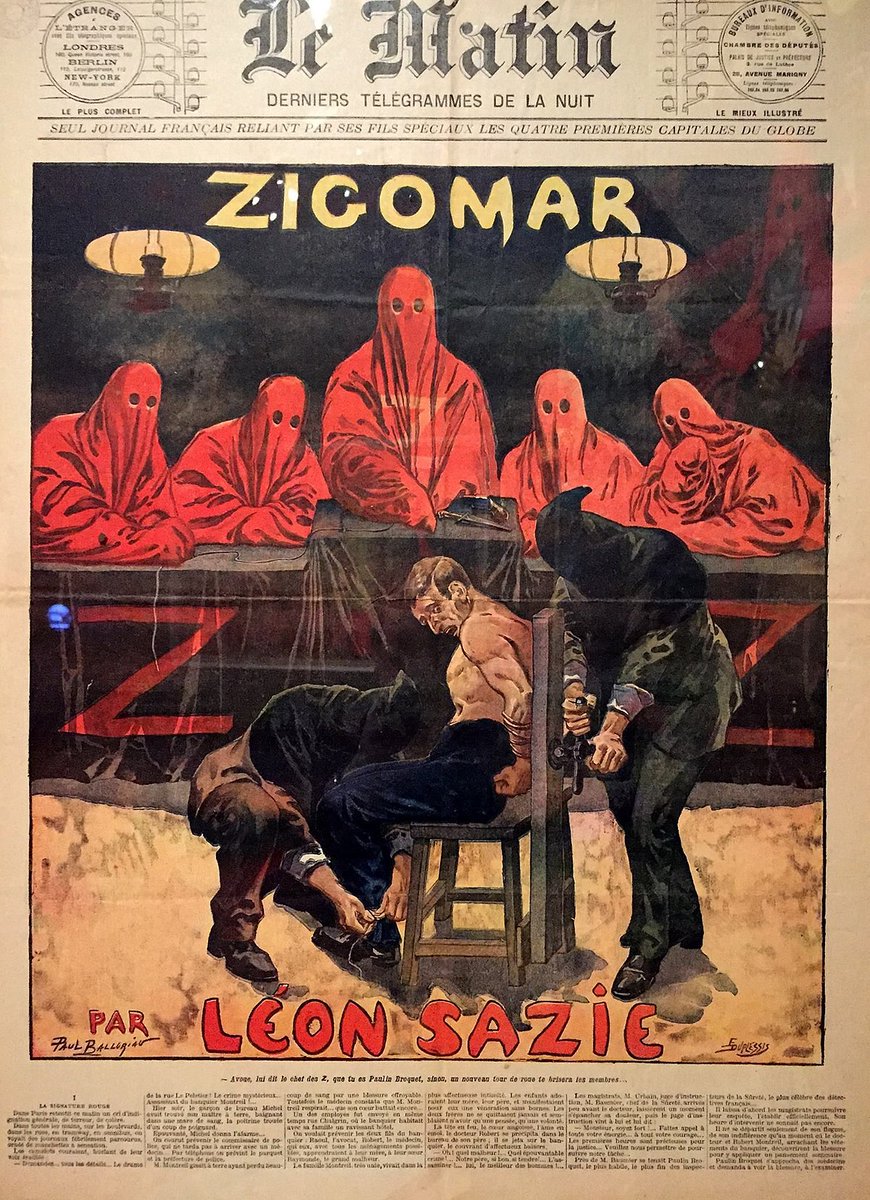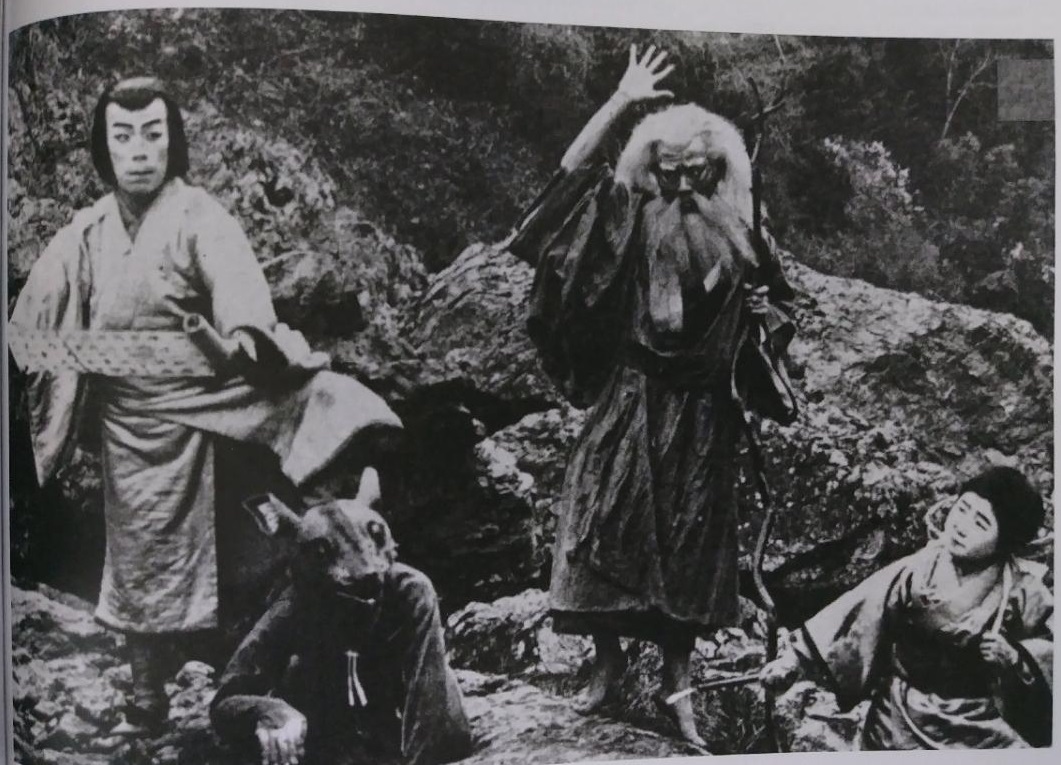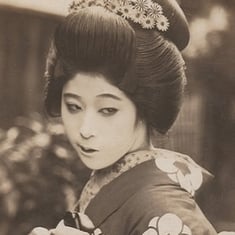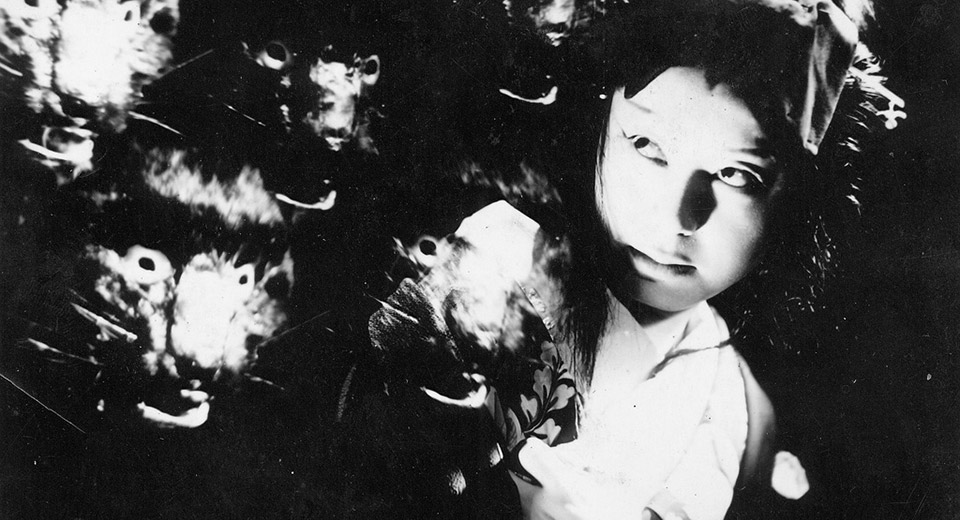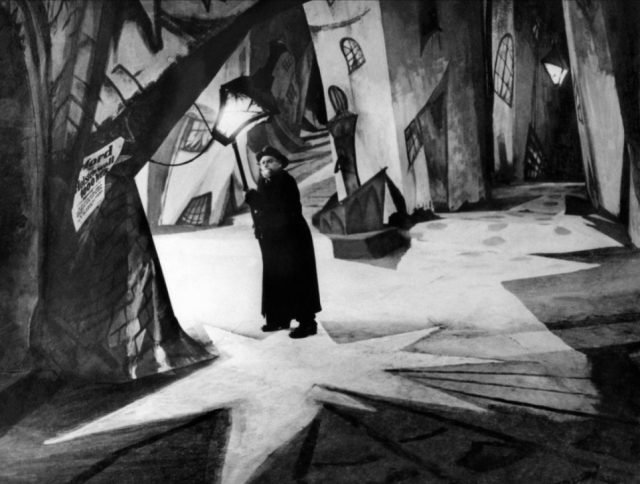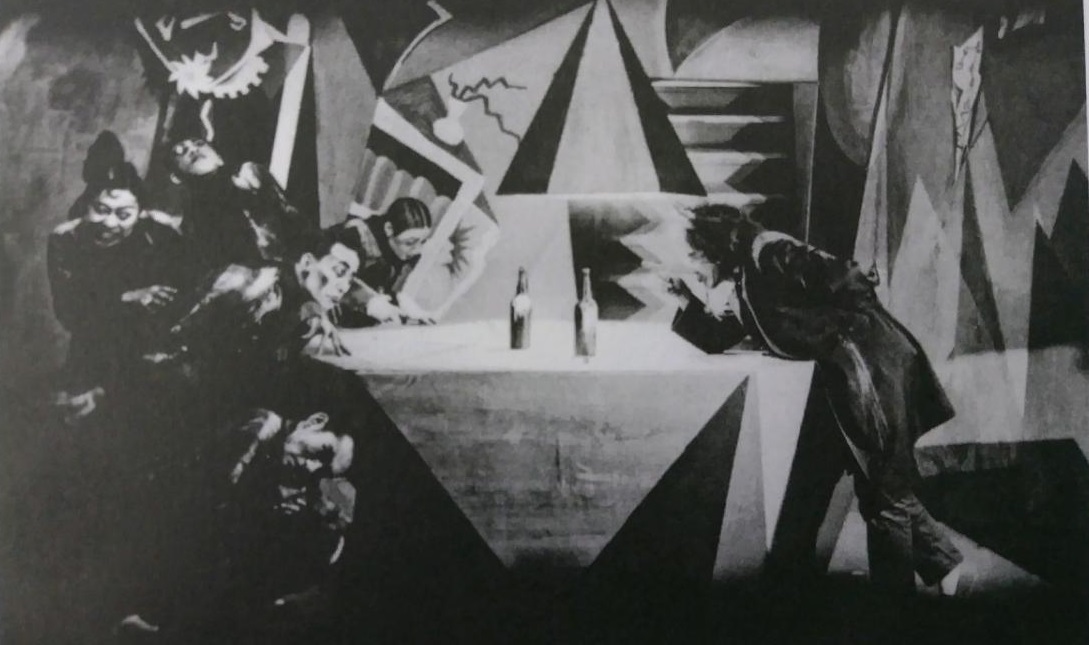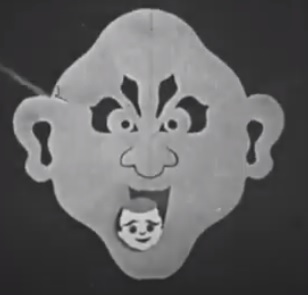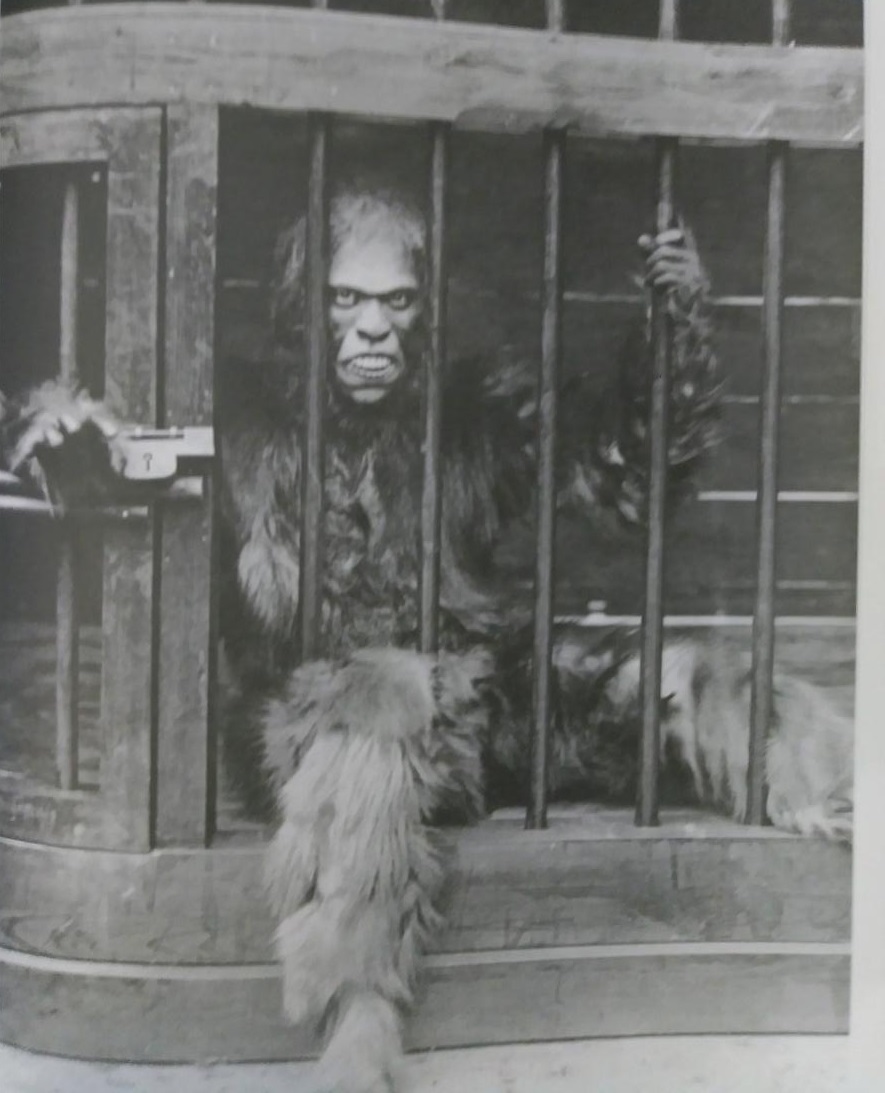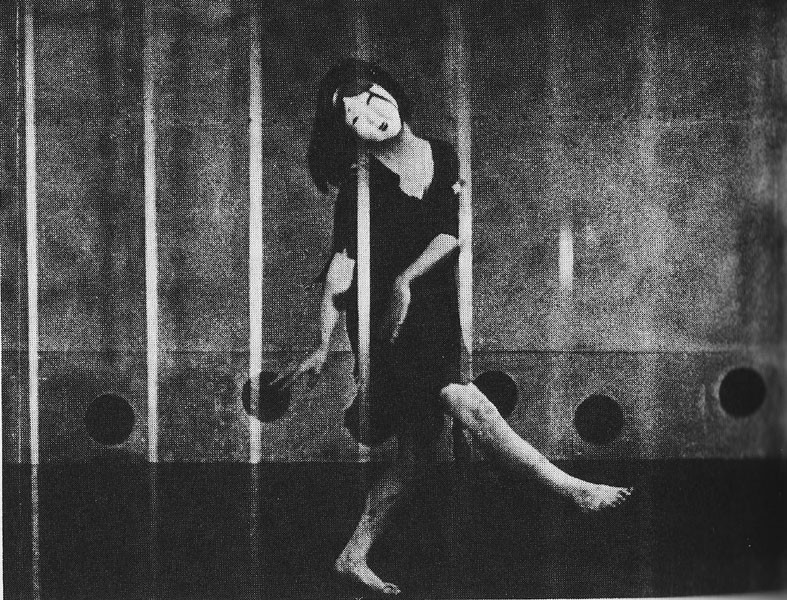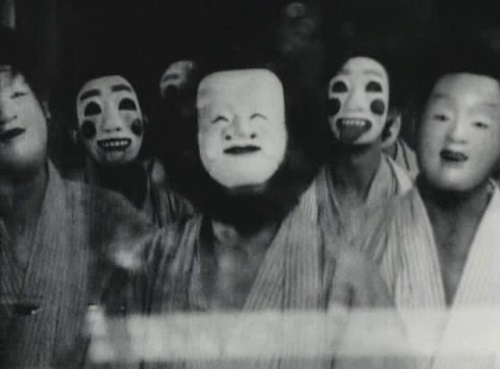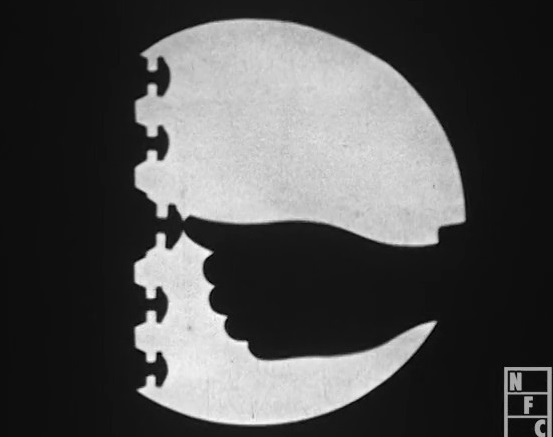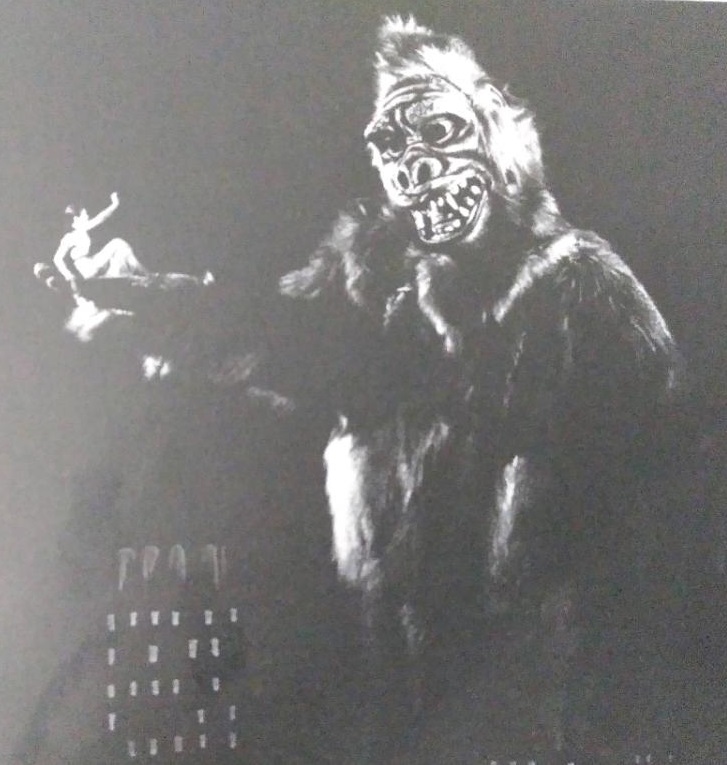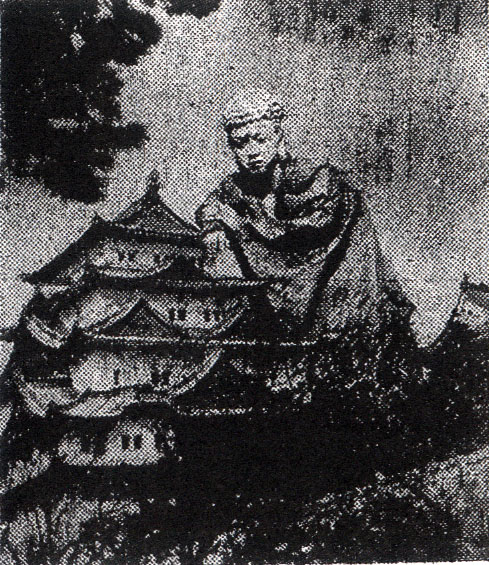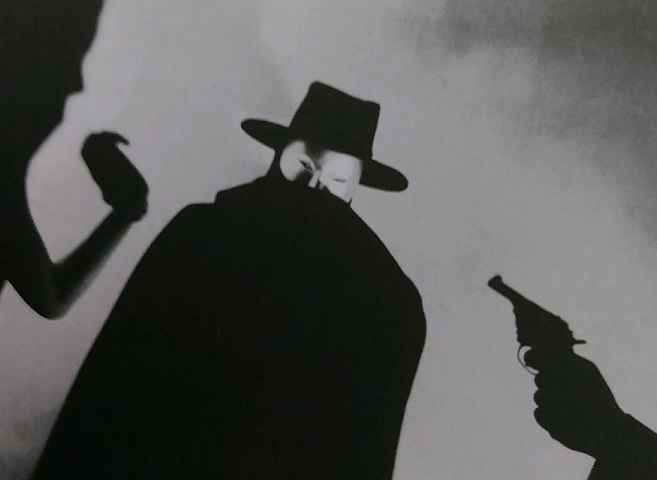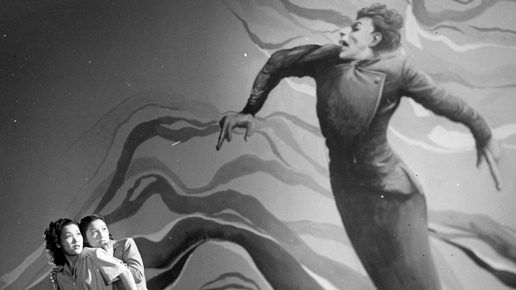Who wants to hear about some obscure Japanese horror movies from 1898-1949?
Trust me, you won’t be getting what you expect.
(Warning for those who don’t like long threads: this is a big one. Mute me for a little while if you don’t want me in your TL too much. Thanks!)
1/
Trust me, you won’t be getting what you expect.
(Warning for those who don’t like long threads: this is a big one. Mute me for a little while if you don’t want me in your TL too much. Thanks!)
1/
Japanese moviemaking got its start when a Japanese businessman worked with Louis Lumière to import movie cameras into Japan in 1897. Moviemaking had only been a commercially viable prospect for two years, but the businessman knew what available movie cameras would mean. 2/
The first horror film was Georges Méliès’ LE MANOIR DU DIABLE (House of the Devil, 1897). The first Japanese horror filmmakers didn’t really have any models to go on—they were breaking new ground, which was one reason why Japanese horror films showed little US/Euro influence. 3/
The first Japanese horror (J-horror) film was BAKE JIZO (Statue of Jizo, 1898). (Jizo is a mythological protector of dead children). The only reason we know about BAKE JIZO is because its cameraman talked about it in an interview in the 1920s—there are no records for the film. /4
BAKE JIZO was straight Japanese myth, using static shots. Pre-1915 Japanese films were largely filmed versions of scenes from kabuki & noh plays, so there was one camera filming that never moved. Theatrical rather than cinematic. Early J-horror films didn’t vary from this. 5/
1908: MIYAMOTO MUSASHI HI HI TAIJI NO BA (Miyamoto Musashi: Giant Ape Extermination Scene), about Miyamoto Musashi, most famous samurai of them all, fighting against Hi Hi, the giant white ape of the mountains. This was the first of many (*many*) J-horror films with apes. 6/
1910: SANJUSANGENDO-TO YURAI (Origin of Sanjusangendo Temple), about goings-on in the titular haunted temple, is of note because of its lead: Matsunosuke Onoe, first superstar of Japanese film. He drew fans wherever he went, co-invented jidai-geki, and starred in 1000+ films. 7/
Conversely, 1910 was the year that US studios stopped hiding actors’ identities. Florence Lawrence was Hollywood’s first star—but the efforts to show who she was, against the wishes of her studio, prove once again that Hollywood Rule #1 was always true: MOVIE STUDIOS ARE EVIL. 8/
1910: Japan goes crazy for paranormal phenomena thanks to a series of Tokyo University experiments conducted by Fukurai Tomokichi (below) using two women, Chizuke Mifuno and Nagao Ikuku, to prove that paranormal abilities exist. 9/
These experiments “prove” (*coff*) that Chizuke can see through solid objects & that Nagao has clairvoyance and “thoughtography,” the ability to burn her thoughts on to film stock as images. 10/
The experiments are flimflammery, of course, and after the newspapers are done heaping scorn on Fukurai and his two accomplices, he is thoroughly discredited and Chizuke (below) has committed suicide out of shame of being (accurately) accused of fraud. 11/
But that was years later. Back in 1910, when people still believed in the “experiments,” a book on Fukurai’s the "experiments" was published and a movie, SENRIGAN (Clairvoyance), was made. SENRIGAN is a fictionalized narrative of the spoooooky events around the “experiments.” 12/
SENRIGAN’s lead actress, Kinoshita Kichinosuke, played a Chizuke Mifuno-like character in the movie, and was so memorable that Hideo Nakata, the director of RINGU (1998), would model Sadako’s mother on Kinoshita’s performance. 13/
1910. TENJIKU TOKUBEI was a fictionalized J-horror narrative of the eponymous 17th century traveler’s travels and adventures. In the film Tenjiku first appears riding a giant, poison gas-breathing toad and brandishing a severed head.
Pretty metal for 1910. 14/
Pretty metal for 1910. 14/
1911. ONOGAWA KISABURO was J-horror about the eponymous 18th century sumo wrestler fighting a goblin in a haunted house. We need more films about sumo wrestlers throwing around goblins in haunted houses and fewer films about samurai cutting monsters in half. Yeah, I said it. 15/
1912. JIRAIYA GOKETSU TAN-BANASHI (Legend of the Hero Jiraiya). The first known ninja film. From 1915-1925 ninja films were the Japanese equivalent of 2010s superhero movies: enormously popular, with state of the art sfx and respected actors willing to lower themselves for ¥. 16/
1912. The first Japanese Zigomar movie, NIHON JIGOMA (Japanese Zigomar), appears. Zigomar was a French dime novel character, a murderous anti-hero and the primary influence on Fantomas. The popular French Zigomar films were smashes in Japan & inspired Japanese versions. 17/
Japanese Zigomar movies introduced faster editing into Japanese cinema. But newspapers invented a moral panic about the Zigomar films, blaming various crimes on them, the police started banning films, and the Diet passed a new film exhibition code outlawing “corrupt” movies. 18/
1915. KAISODEN (Bizarre Rat Legend). Mostly of note because of the title and this fun still from the movie, which reminds me of my last family reunion. 19/
1915. SARUTOBI SASUKE. Sarutobi was a famous ninja from folklore & 20th century popular literature. This movie (first of many about Sarutobi) sparked the ninja film craze which would last for a decade and begin the Tenkatsu-v-Nikkatsu studio wars. (viz. Marvel-v-DC). 20/
1917. HANAWA HEKONAI KAPPA MATSURI (Hanawa hekonai: Kappa Festival). About a kappa, a mythological creature. HANAWA HEKONAI was the first significant proto-animé, though there had been an obscure 1911 predecessor. 21/
What had inspired Japanese animators were the first screenings of US and Euro animated films in Tokyo in 1914, including Winsor McCay’s LITTLE NEMO (1911) ( https://www.youtube.com/watch?v=K8qow7jTyoM).">https://www.youtube.com/watch... The Japanese studios & animators started trying to make manga eiga (manga films) soon after. 22/
1921. JASEI NO IN (Lust of the Serpent). The first modern J-horror film. Eroto-horror based on a story by Ueda Akinari. Made by a director who’d apprenticed in the US. Contributors to the film included awesome horror writer Tanizaki Junichiro & actress Suzuki Sumiko (above). 23/
Suzuki Sumiko would become an icon of Japanese horror—but she was no scream queen. She was the Japanese Lugosi or Karloff, *the* heavyweight actor you called upon to give a standout performance in your film. (Writers, there’s your protagonist for a cracking horror novel) 24/
1922. YOJO NO MAI (Dance of the Sorceress). “Concerning the obsessions of a blind and disfigured composer for an alluring dancer…who dies on stage vomiting blood whilst performing the song he wrote for her, and the continuation of his infatuation beyond the grave.” Fun! 25/
1923. CHI TO REI (Blood and Souls). That’s right, baby: the first Japanese movie visually inspired by Robert Wiene’s THE CABINET OF DR. CALIGARI! Expressionist designs ftw! And directed by Kenji Mizoguchi ( https://en.wikipedia.org/wiki/Kenji_Mizoguchi),">https://en.wikipedia.org/wiki/Kenj... no less!
I must see this film. 26/
I must see this film. 26/
1925. KAIBUTSU (Monster). A two-part horror-mystery about an escaped circus ape who is responsible for a series of murders in old Edo. Not the first Japanese cinematic killer ape, but the first we have a film still of. 27/
1926. ZOGE NO TO (The Ivory Tower). Another Japanese film overtly influenced by DR. CALIGARI!
This could not have been better or more precisely crafted to appeal to me. 28/
This could not have been better or more precisely crafted to appeal to me. 28/
1926. BAGUDA-JO NO TOZOKU (Thieves of Baghdad Castle). In 1926 Lotte Reiniger, a German film director, created a landmark animated film, THE ADVENTURES OF PRINCE ACHMED, which is the oldest surviving animated feature film. (You can see it here: https://www.youtube.com/watch?v=25SP4ftxklg&list=PLZ_0s_ft1OZXV7Nxq1m65Ip0ZG1OtOwUw&index=2)">https://www.youtube.com/watch... 29/
One of the animators influenced by Reiniger was Noburo Ofuji, who made his own animated movie, BAGUDA-JO NO TOZOKU, using colored paper cut-outs (the SOUTH PARK method). Originally 38 minutes long, all that remain are these 14 minutes: https://www.youtube.com/watch?v=wcD43ZJXjBU">https://www.youtube.com/watch... 30/
1926. GORIRA (Gorilla). A film that was presciently made just for me and a handful of my friends. A Japanese scholar learns yojutsu (“black magic”) from an ancient Dutch grimoire & transforms himself into a human-ape hybrid to massacre those who have wronged him. 31/
I should write about the function of Western “science” in J-horror pre-GOJIRA. Ancient Dutch grimoires aren’t atomic bombs, but the “science” within them is deadly enough to the Japanese in these films. More pre-WW2 Japanese discomfort with the modernity of the West? 32/
1926. KURUTTA IPPEIJI (Crazy Pages). The bad boy of early Japanese film, Kinugasa Teinosuke, was a film oyama (female impersonator) before turning to directing. His NICHIRIN (The Sun, 1925) was censored on charges of “national blasphemy.” 33/
Kingusa’s KURUTTA IPPEIJI was his first experimentation with Western-influenced film techniques, using jagged close-us & many visual effects to create a hallucinatory trip into the realm of insanity. THE avant-garde horror film of its day, it looks pretty creepy even now. 34/
1926. SHIN NIHON-JIMA (New Island Japan). Remember STARBLAZERS? That’s SHIN NIHON-JIMA, only the “undersea warship” is used to destroy an imperialistic US fleet. Based on a very xenophobic 1900 Jules Verne-influenced SF novel. The movie was popular & inspired a 1927 sequel. 35/
SHIN NIHON-JIMA was the first “White Peril” film, which are exactly like Yellow Peril films, only featuring YT men and women in the place of POC. Xenophobic & bigoted, reflecting the time & place.
In the 1930s Japanese filmmakers made “Jewish Peril” SF films. https://abs.twimg.com/emoji/v2/... draggable="false" alt="☹" title="Stirnrunzelndes Gesicht" aria-label="Emoji: Stirnrunzelndes Gesicht"> 36/
https://abs.twimg.com/emoji/v2/... draggable="false" alt="☹" title="Stirnrunzelndes Gesicht" aria-label="Emoji: Stirnrunzelndes Gesicht"> 36/
In the 1930s Japanese filmmakers made “Jewish Peril” SF films.
1928. BAKASARE YAJIKITA (Yaji and Kita Bewitched). Based on a 19th century novel about two travelers’ wacky adventures. In the film the two travelers are attacked by witches. Zaniness ensues.
So it’s the Japanese ABBOTT AND COSTELLO MEET WITCH HAZEL. Because why not? 37/
So it’s the Japanese ABBOTT AND COSTELLO MEET WITCH HAZEL. Because why not? 37/
1929. KAIDAN DOCHU SUGOROKU (Ghost Story: Travel Sugoroku). Sugoroku is a dice game whose boards usually have travel themes. Traditionally illustrated by ukiyo-e artists. In this film, a sugoroku set is responsible for terror. Hello, 1929 JUMANJI! 38/
1932. HYAKUNENGO NO ARU HI (100 Years Later). The first science fiction animé. About the director’s Me character, who is: killed in WW2; brought back from the dead 100 yrs later in a futuristic Tokyo; and sent into space--but his spaceship is haunted by his own ghost. 39/
Other early sf animé: KASEI HIKO (Flying to Mars, 1935), a 53-second animated toy film in which a rabbit astronaut lands on Mars and is attacked by a vicious Martian gorilla. Another notable SF toy film was JINZO NINGEN OABARE (Robot Rampage, 1935). 40/
Toy films (omocha-firumu) were shorts ranging from 20 seconds to 3 minutes long and produced for home projection (a precursor to home video purchases). The toy films were designed to get kids to buy the toys seen in the films. (So predatory, very exploitive, much capitalism). 41/
What a good thing the US has never had a problem with toy films/tv shows that were aimed at children & designed to create a hunger for consumer goods which could never be sated, thus creating an emotionally addicted proletariat. Yes, what a good thing it never happened here. 42/
1933. WASEI KINGU KONGU (Japanese-Made King Kong). KING KONG was so globally successful that director Saito Torajiro, working for quick-buck studio Shochiku, rushed a cash-in flick into production. But WASEI KINGU KONGU took its own approach rather than aping the original. 43/
In the film actor Isamu Yamaguchi, who usually played the heavy in crime films, played a man playing Kong in a gorilla-suit, as part of a stage-act inspired by the RKO movie. When he jumps off-stage in costume to chase an enemy through the streets of Tokyo, zany chaos ensues. 44/
In other words, WASEI KINGU KONGU has a meta-commentary on filmmaking & KING KONG *AND* presents the first Japanese-fleeing-through-the-streets-of-Tokyo-from-a-monster scene as comedy. The ONLY thing this movie is missing is an actual kaiju. As it is, 14/10, would Kong again. 45/
1934. DAIBUTSU KAIKOKU (Giant Buddha Traverses the Country). Inspired by KONG, Edamasa Yoshiro created Japan’s first kaiju movie. An enormous Buddha statue comes to life. Includes scenes of a geisha dancing on the statue’s hand & the Buddha in Hell (filmed in Technicolor). 46/
Back in 1928 Edamasa Yoshiro had worked on a SF movie called REI NO SHINPAN (Judgment of Souls), about a scientist who sought to eradicate all flaws from the human brain and create a utopian state. 47/
Naturally, right-wing groups accused REI NO SHINPAN of being Communist propaganda and forced the government to shut down production of the film.
The lesson from this is NEVER LISTEN TO RIGHT-WING GROUPS WHEN IT COMES TO POPULAR CULTURE. They just have *no* sense of fun. 48/
The lesson from this is NEVER LISTEN TO RIGHT-WING GROUPS WHEN IT COMES TO POPULAR CULTURE. They just have *no* sense of fun. 48/
1934. OMOCHHA-BAKO SERIES DAI-SAN-WA: EHON SENKYU-HYAKU-SANJU-ROKU-NEN (Toy-Box Series 3: Picture Book of 1936). I don’t really need to say much about this trademark-violating propaganda cartoon. It still exists—go have a look: https://www.youtube.com/watch?v=CpLhprOsMLc">https://www.youtube.com/watch... 49/
1935. TETSU NO TSUME (Steel Claw). A pulp action/crime thriller. The titular hero had a steel claw for a weapon. More stylishly shot than good, but evidence of a desire on the part of the Japanese for modern pulpy costumed heroes, not just the traditional stuff. 50/
1936. KAI-DENPA SATSUJIN KOSEN DAI ICHI-HEN – NINGEN TANKU SHUTSUGEN (Strange Electric Death Ray 1: Human Tank Emergence). Japan’s first pulp serial. A rampaging robot SF movie with a mad scientist, masked phantom, crippled henchmen & “human tank” controlled by radio waves. 51/
1936. SANGAKU MAJO ONNA TAZAN (Mountain Witch: Female Tarzan). “Mountain witch” and “female Tarzan” are two phrases I never expected to see in conjunction, and yet here we are.
The first J. Weissmuller Tarzan film (1932) triggered a global craze for stories about Tarzan. 52/
The first J. Weissmuller Tarzan film (1932) triggered a global craze for stories about Tarzan. 52/
So a Japanese poverty row production company cranked out SANGAKU MAJO ONNA TAZAN to cash in on the Tarzan craze, combining horror, witchcraft, & the King of the Jungle.
Speaking of witch: THE MOUNTAIN WITCH rpg ( https://rpggeek.com/rpgitem/44459/mountain-witch)">https://rpggeek.com/rpgitem/4... is good. You should buy it. 53/
Speaking of witch: THE MOUNTAIN WITCH rpg ( https://rpggeek.com/rpgitem/44459/mountain-witch)">https://rpggeek.com/rpgitem/4... is good. You should buy it. 53/
1936. YOJUTSU SHIRANUI KUMO (Black Magic, White Spider-Web). Sorcerous battles using spider-magic, ninja magic, black magic, shape-shifting and prosthetic weaponry. Yes, you read that right: “prosthetic weaponry.” 54/
You kids these days think you’re so transgressive with your hippity-hop and hula hoops and your body horror animé and your Tetsuo: The Iron Man. Well, the 1930s were doing prosthetic weapon ninja films set in old Edo with *three* different types of battle magic. So there! 55/
1937. FUKUSHU SURU SHIGAI (The Corpse’s Revenge). I…that is…you see…it’s like this.
Back in the mid/late 18th century there was a Japanese pharmacologist/inventor named Hiraga Gennai. Among other things, he invented the “Erekiteru,” a “voltage generator.” 56/
Back in the mid/late 18th century there was a Japanese pharmacologist/inventor named Hiraga Gennai. Among other things, he invented the “Erekiteru,” a “voltage generator.” 56/
Gennai died in prison after killing one of his students. Wiki entry here: https://en.wikipedia.org/wiki/Hiraga_Gennai.">https://en.wikipedia.org/wiki/Hira... YOJUTSU SHIRANUI KUMO takes Gennai & the Erekiteru & tells the tale of a murdered samurai, resurrected electrically by Hiraga, who hunts down & violently slaughters his killers. 57/
1938. KAI GENMA (Strange Illusory Demon). Nothing too exceptional about this film—ninja action + black magic—but I like this image from the film. Conveys action much better than US/Euro action films of the era did. 58/
1938. KOTETSU NINGEN (The Iron Man). Best (maybe) of the samurai-vs-robots movies.
Yeah, you heard me. Samurai, ninja, superpowers, Edo-era robots, and—and I’m quoting here—“weird combat prosthetics.”
There was an entire *genre* of these films! Glee! 59/
Yeah, you heard me. Samurai, ninja, superpowers, Edo-era robots, and—and I’m quoting here—“weird combat prosthetics.”
There was an entire *genre* of these films! Glee! 59/
1938. MITSURIN NO KAIJU-GUN (Secret Jungle Monster Group). An absurdist pannikku komedi (panic comedy) abt college students who encounter a race of crazed ape-men in the Chichibu mountains.
I’m sure I saw a 1970s Disney remake of this film starring Ken Berry & Sandy Duncan. 60/
I’m sure I saw a 1970s Disney remake of this film starring Ken Berry & Sandy Duncan. 60/
1938. SORA NO ARAWASHI – SENSEN MANGA (Sky Eagles: War Manga). A propaganda cartoon in which anthropomorphic animal pilots of the Japanese air force annihilate images of the “enemy” – US & USSR - personified by Popeye & Stalin.
Hmph! Popeye’s way cooler than Stalin. 61/
Hmph! Popeye’s way cooler than Stalin. 61/
1940. ADAUCHI KOI NINGYO (A Doll’s Love Revenge). A doll-maker’s daughter becomes an acclaimed actress but kills herself when she receives unwanted attention from an obsessive “admirer.” The doll-maker creates a life-sized human doll in her image, which kills her murderer. 62/
Scary human-sized dolls killing creepy incel stalkers IS MY JAM.
We need a remake of this dealing with Gamergate chuds STAT. 63/
We need a remake of this dealing with Gamergate chuds STAT. 63/
1940. SONGOKU (Songoku). A light-hearted comic treatment of the parts of JOURNEY INTO THE WEST involving the Monkey King, “with scenes including a rampage by over fifty robots.” Because what JOURNEY INTO THE WEST needed, obviously, was rampaging robots. 64/
1949. NIJI OTOKO (The Rainbow Man). A psychedelic murder mystery drug freak-out which used color sequences in the form of rainbow-hued hallucinations by those about to die, who are seemingly under the influence of mescaline & can only gibber “rainbow” over & over again. 65/
These mysterious deaths take place in an old house belonging to the Maya family, among whose members are a psychotic painter, a deranged scientist experimenting in the “spectral register,” and a strange “cat girl.” 66/
1949 (five years before GOJIRA): UMA MA RIKU WO IKU (The Sea Monster Reaches Land), a kaiju pulp docu-drama about a massive octopus which crawls onto an island. The octopus encounters various giant vermin, including a snake, a spider, & a praying mantis. 67/
And that& #39;s it!
Thanks for reading all of this. I took a lot of the preceding from CARNAL CURSES, DISFIGURED DREAMS by Kagami Jigoku Kobayashi.
My (much longer) Patreon essay on these movies is available for free at https://www.patreon.com/posts/42762536 .">https://www.patreon.com/posts/427... Enjoy! 68/68
Thanks for reading all of this. I took a lot of the preceding from CARNAL CURSES, DISFIGURED DREAMS by Kagami Jigoku Kobayashi.
My (much longer) Patreon essay on these movies is available for free at https://www.patreon.com/posts/42762536 .">https://www.patreon.com/posts/427... Enjoy! 68/68

 Read on Twitter
Read on Twitter